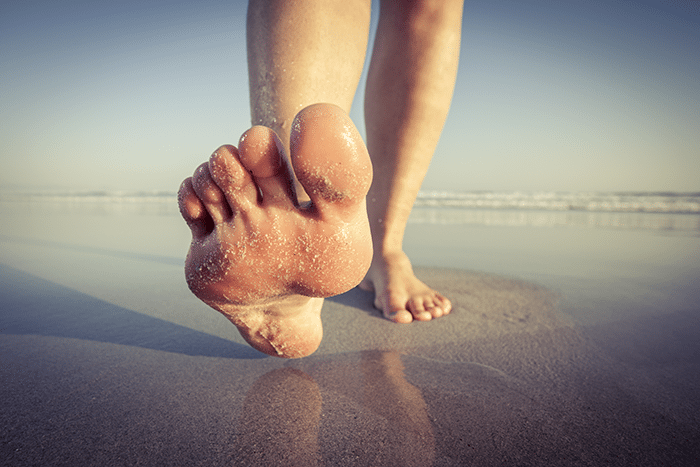Why Is Barefoot Running a Thing?
I have a confession to make: I’m a cheapskate. And when it comes to running gear, there’s no exception. Why spend more money than necessary?
Unfortunately, my philosophy also applies to running shoes — or it did, until 2012. While I was wrapping up my freshman year of college that May, my running shoes were getting a bit worn out. I could feel that their time was coming to an end, so I threw them away, anticipating I would purchase a new pair when I returned home to suburban Minnesota for the summer.
But when I headed back to Minnesota, I was too cheap to actually drag myself to the shoe store to shell out 80 plus dollars I didn’t have for a brand new pair of Asics. So in true penny pincher-style, I took an alternative route: I decided to run barefoot.
I stepped outside my house into the warm, early summer air and started my usual three-mile run along the sidewalks of my neighborhood. I tried to run on the grass as much as I could, but for the majority of the run, I remained on concrete. Around the halfway point, my feet felt a little sore, but by the time I got home, I was dying.
I walked inside, where my family was sitting around the kitchen table. “How was your run?” my mom asked me. “Good,” I replied, “but I think I hurt my feet.” I sat down and picked up one foot to assess the damage. Lo and behold, I had a huge blood blister on each of my big toes. Ouch. Although I used gauze to wrap up my toes, that didn’t stop me from having to limp around on my heels for the next three days.
Needless to say, I wasn’t excited to try the recently popularized strategy again. Although I have run barefoot on a few golf courses since, I’ve never done a full three miles on pavement since. But that doesn’t mean it hasn’t stopped other people. Just last month, I was running a 5k when a fellow runner breezed past me wearing absolutely nothing on his feet.
But what exactly started the trend? One early and well-known occurrence happened in September of 1960 during the Olympic Marathon in Rome, according to Runner’s World. Abebe Bikila, an Ethiopian runner, completed the race in a world record time of 2:15:16.2. Bikila’s famous marathon time was all the more shocking given the fact that he was barefoot. The other participants were intrigued by his technique. And the intrigue hasn’t disappeared — the fascination around barefoot running only grew with the rise of Vibram FiveFingers (you know, those toe running shoes).
Still, if you’re like me, you’re wondering about the appeal of barefoot running. According to some — including Vibram — minimalist or barefoot running “makes us healthier, happier and more connected to our bodies.” Research headed up by Harvard paleoanthropologist Daniel Lieberman, PhD, claims barefoot running “strengthens the muscles in your foot.”
But others have warned against the dangers of barefoot running. In 2014, the American Podiatric Medical Association issued a statement on the concept, saying the “risks of barefoot running include a lack of protection, which may lead to injuries such as puncture wounds, and increased stress on the lower extremities. Research is ongoing in regards to the risks and benefits of barefoot running.”
Regardless of its advantages or disadvantages, one thing is for certain: People cannot just jump into barefoot running — it takes time to adjust. On Zenhabits.net, writer Leo Babauta reminds readers that “[m]any people make the mistake of doing too much, too quickly, and that’s a big mistake.” Even Vibram tells FiveFinger users that “[a]n adjustment period is normal.”
The question remains: Why is barefoot running a thing? For certain individuals, it’s energizing, and for some — like Abebe Bikila — it actually works. But be careful — it also holds risks. And above all, don’t make my mistake and make your first barefoot running experience a three miler on concrete.
3 thoughts on “Why Is Barefoot Running a Thing?”
Comments are closed.














I’ve been transitioning to more minimalist running shoes over the past 2 years. It takes a lot of time! And good minimalist running shoes cost $$$ (unfortunately, as much as I like being a cheapskate myself)
I feel you. Investing in minimalist shoes is a better choice than instantly transitioning to shoeless running, though! 🙂
Great post. thanks for this. I think what other people don’t understand about barefoot running is that most barefoot runners chose to run with barefoot because they like it and they’re comfortable with it. It’s actually a choice. They can either use a minimalist running shoe or not, it’s up to them. However, wearing of minimalist running shoes will help runners prevent leg or foot injuries to happen.